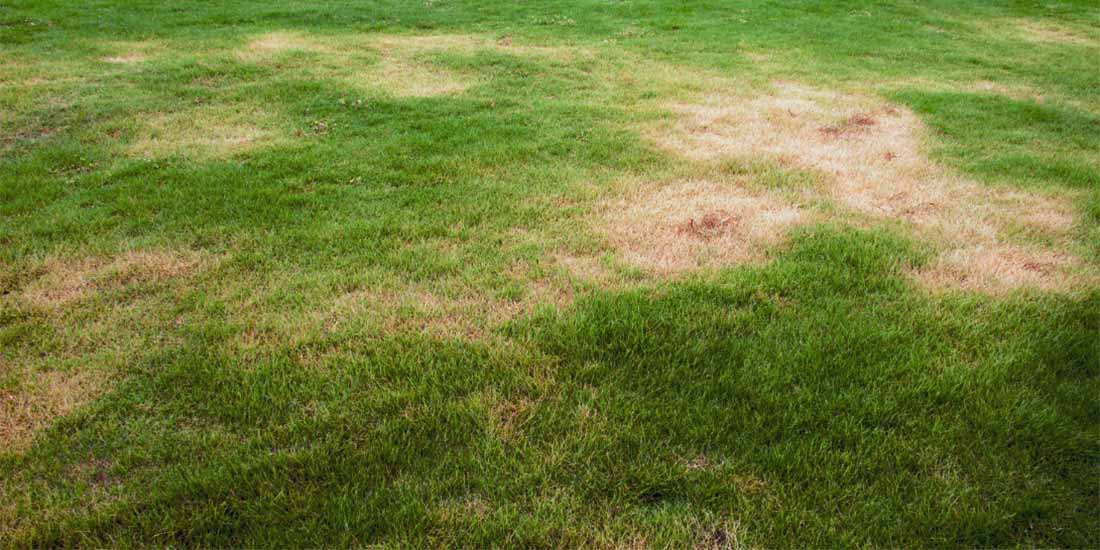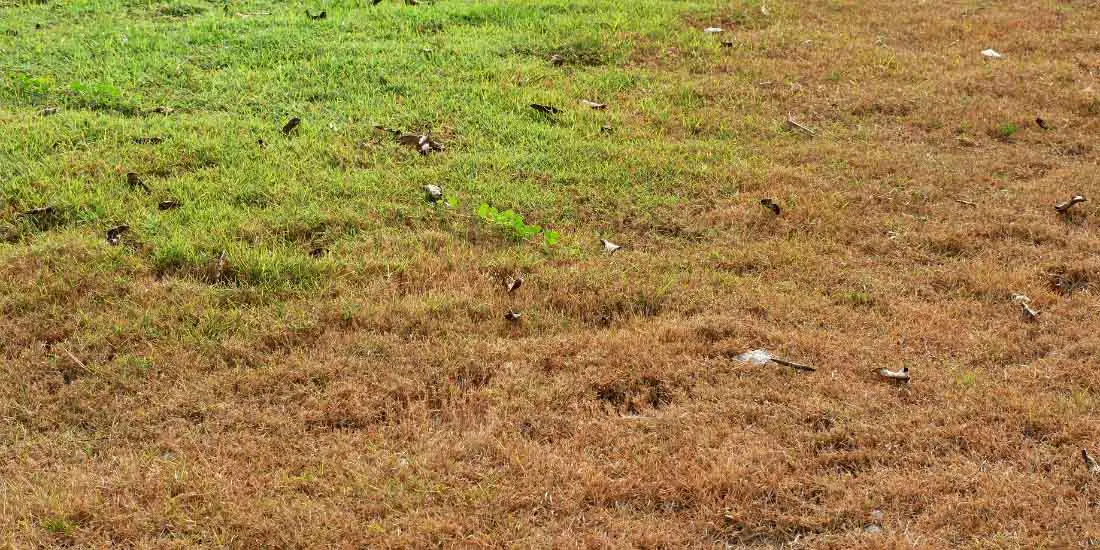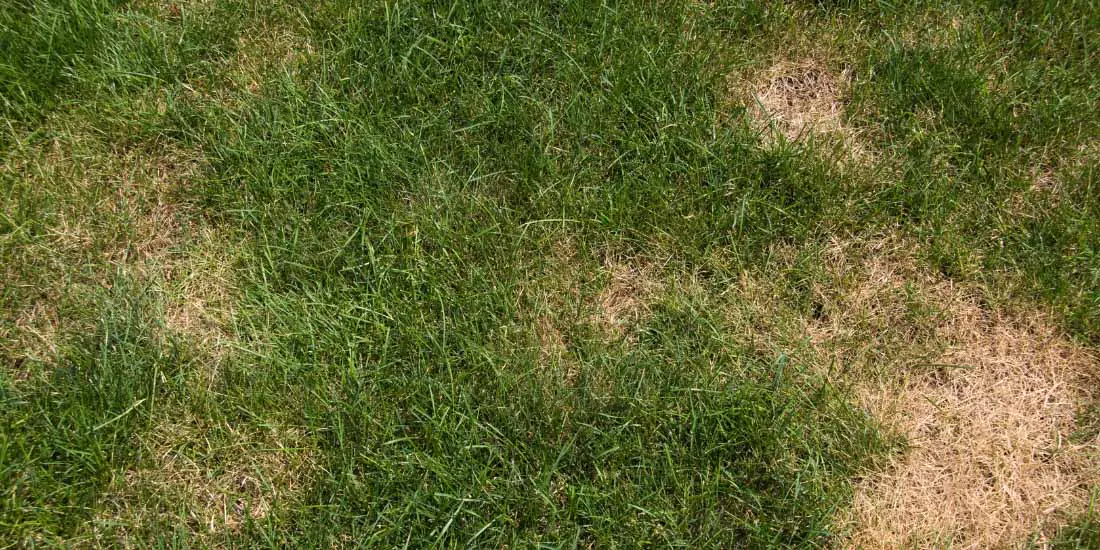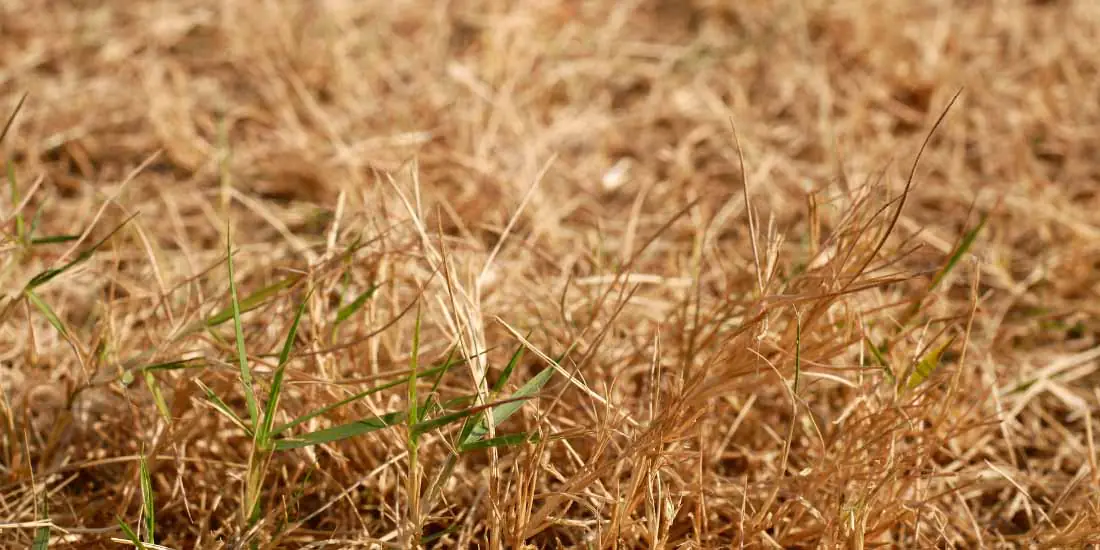Why is my grass dying in patches?

Even the best and most carefully looked after lawns can fall victim to patches of dying grass from time to time, and this can leave you wondering, “Why is my grass dying in patches?”. But thankfully, these areas of dying grass are easy to diagnose and don’t take long to repair. So, keep reading for advice on removing the dying patches and making your lawn healthy again.
Common causes for why your grass is dying in patches
We have listed the most common causes of why your grass is dying in patches below. Of course, some of these causes will be easier to identify than others, but our suggestions will make you aware of what could be disrupting the growth of your lawn.
Wear and tear
Your garden is there to be used, but many lawns get too much wear and tear and not enough time to repair. Family gatherings, kids playing, or pets running amok – can all add up and take their toll! Most gardens tend to see an increase in traffic during the spring and summer months. This is when you’re likely to see dying patches of grass appearing in tired and worn areas if left untreated.
A simple fix for the areas of your lawn that are too far gone, when the grass looks dead, is to overseed your lawn. But, if the grass is yellowing and looking tired, giving your lawn a nutrient boost with fertiliser will give your lawn a new lease of life and encourage your grass to grow healthier and thicker.
Other things like lawn furniture, lawn mowers, or lawn hoses left on your lawn can cause problems. These areas are not getting enough sunlight (and are often sheltered from rainfall), which causes the grass to die. Keeping unnecessary items off your lawn will promote healthy growth and not harm its growing potential.
Dog urine is a common cause of grass dying in patches

If you suspect that dog pee is causing your grass to die in patches, you can also try training your dog to use only one area of your garden. Then, you can water that area with a garden hose or a watering can. Doing this will dilute the nitrogen in the urine and encourage your grass to grow green again.
Our FAMILY: Kids and Pets Grass Seed is ideal when overseeding the patches in your garden affected by dog urine. This durable grass seed mix is designed for gardens that get a lot of activity from dogs running around. The pee patches will still need to be watered since no grass seed is resistant to dog urine. However, the grass in this mix will recover faster to wear and tear than regular grass seed.
Areas in need of watering

It’s also worth mentioning that during periods of milder, there may not be much rainfall (or any at all) for weeks. This is more common in spring and summer and could also be combined with warmer temperatures, further increasing your lawn’s need for moisture!
Keep an eye on your local weather forecast, especially if you see patches of yellowing and dead grass appearing when the better weather arrives because it could be a sign that your lawn needs watering!
Lack of nutrients can cause patches of dying grass
Not getting enough soil nutrients is another reason your grass could be dying in patches. A well-fed lawn will maintain its health, grow thick and look vividly green and healthy, and feeding your lawn with fertiliser is an easy way to bring your grass back to life!
The condition of the soil in your garden will affect the health of your lawn. So, soil that’s low in nutrients won’t give your grass the best foundation on which to grow. Unfortunately, this will weaken your lawn, and it will be more vulnerable to pests, fungus and lawn diseases.
We have a helpful video on how to feed your grass to help you choose the best lawn food for your garden and get your lawn back to full strength.
Lawn pests and common fungus
There’s a chance your garden could be suffering from brown patch fungus if the patches on your lawn differ. Caused by periods of heavy rain, increased humidity and warm weather, this fungus is a common problem in the UK.
Areas with brown patch fungus often have green grass growing in the middle, surrounded by dead patches.

Areas affected by grubs or leather jackets will feel spongy to walk on and usually aren’t level. Thankfully, these areas are not difficult to repair, and we have a guide that goes into more detail on repairing the damage left by leather jackets in your garden.
Thatch patches killing your grass

If you don’t mow or water your lawn regularly, thatch can become a problem. Also, if the area of the thatch gets too large, your grass may start to grow its roots within it. Since thatch can’t hold water or nutrients as well as the soil can, your grass will suffer.
More information on how to repair dying patches of grass on your lawn
Now you have some information on what would be causing your grass to be dying in patches, you may also find our Grass FAQ section helpful. But if the suggestions above don’t seem the same as the issues you’re seeing in your garden, send us a message, and we will be happy to help!